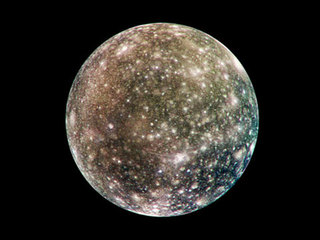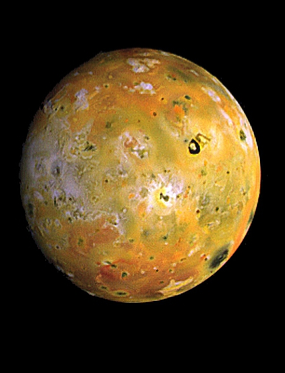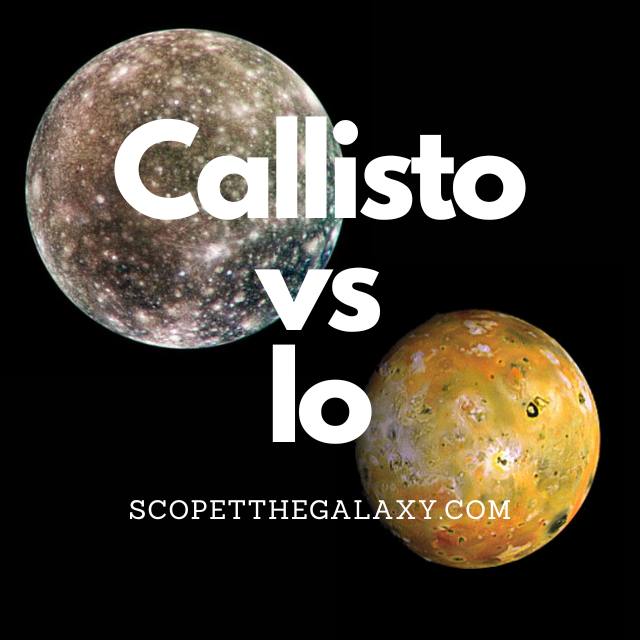*This post may contain affiliate links. This means we may make a commission if you purchase an item using one of our links*
The main differences between Callisto and Io is that Callisto is the 3rd largest moon with a diameter of 4,820.6km whilst Io is 4th with a diameter of 3,643km, Callisto is amongst the most cratered entities in our solar system whilst Io is the most volcanically activity in our solar system and a day on Callisto takes 17 days whilst an Io day is 42 – 43 hours.
There are various other differences between the two so, continue reading for a more detailed look at each of these entities below along with their similarties and differences.
What Is The Moon Callisto?
Table of Contents

Callisto is one of the large moons orbiting Jupiter, the outermost of the Galilean moons, first discovered on 7th January 1610. The surface of this icy world is frozen, but scientists believe an underground ocean could reside beneath the ice.
Even if there’s water on Callisto, it won’t necessarily hold life because the surface is so old. Scientists will need to conduct more research into the moon before determining whether this is a likely possibility.
The ESA’s JUICE (Jupiter Icy Moon Explorer) mission is focused on the three ice moons of Jupiter. It is expected to arrive in 2030 and will focus on learning more about the environment of each, as well as their potential for hosting life.
Scientists estimate that Callisto is around 4.5 billion years old (the same age as Jupiter), and its average distance from the Sun is approximately 778 million km. It has a diameter of 4,820.6km, which makes it similar in size to the planet Mercury, and the average temperature is a frigid minus 139.2 degrees Celsius.
Callisto takes seven days to orbit its planet at an average distance of 1,880,000km, and it is tidally locked, meaning the same side of it always faces Jupiter. But this moon experiences less tidal influence than the other Galilean moons because it lies in the orbit of Jupiter’s primary radiation belt.
The name of this moon is derived from the stories of Greek myth. Callisto was the nymph who had an affair with Zeus, the King of the Gods. Upon hearing this news, Zeus’ wife Hera turned Callisto into a star and placed her in the Ursa Major constellation. Interestingly, every moon of Jupiter is named after a Greek figure who Zeus seduced.
Callisto may be the third biggest moon and similar in size to the planet Mercury, but it only has a mass of 107,593,737,963.819 billion kg. That may sound like a lot, but it’s only ⅓ the mass of the similarly sized Mercury.
You may wonder why scientists classify Callisto as a “moon” rather than a planet if it’s almost the same size as Mercury. The reason is simple; planets must orbit the sun, but Callisto orbits one of the planets.
The composition of this frigid world is around 60% rock and iron and 40% ice. The moon has roughly equal amounts of rock and ice, plus the potential for water below the surface. There are also traces of carbon dioxide, organic compounds, and silicates.
This moon is one of the oldest landscapes in the Milky way and the most heavily cratered body in our system. However, scientists believe this could now be a “dead” moon as there are no longer any signs of volcanism or plate tectonics on its surface.
What Is The Moon Io?

The Moon Io – also known as Jupiter I – is the third largest of the Galilean moons, which has the closest orbit to Jupiter. It is the fourth-largest moon in our solar system by size – with a diameter of 3,643km – but has the highest density of all moons in the Milky Way.
In addition, Io has the strongest surface gravity of all moons and the least water by atomic ratio compared to any other astronomical object in our solar system.
Perhaps the most interesting feature of this lunar body is the 400 active volcanoes on its surface, which make it the most volcanically active object in the Milky Way; some of these volcanoes can exude plumes of sulfur to a height of several hundred miles.
The reason for this intense activity is the tidal heating caused by friction in the moon’s interior. Thanks to Io’s proximity to Jupiter, it finds itself caught between the gravity of its planet plus the two nearby moons – Ganymede and Europa. And this creates extreme tidal forces.
A side effect of these tidal forces is heat, which keeps most of Io’s crust in liquid form. Because of this, the surface of Io experiences a constant state of renewal; sites once home to large craters are slowly filled with molten lava and liquid rock.
While the complete makeup of Io’s surface is not yet defined, theories suggest that its main component could be sulfur and sulfur compounds because of the varied coloring. Silicate rock could also be a likely component as it would account for the high temperatures.
Io orbits Jupiter from a distance of around 422,000km, with an orbit that takes 42.5 hours to complete. Sitting 778,000,000km from the Sun, the surface temperature of this planet sits around -130 degrees Celsius. But due to the intense volcanic activity, the lava flows can reach temperatures of 1649 degrees Celsius, which is far hotter than anything on Earth.
Similarities Between The Callisto And Io
In regards to the similarities between these two moons, they include the following:
- Callisto and Io are two of Jupiter’s moons.
- Galileo discovered both Callisto and Io in the 17th century.
- They both have a terrestrial based composition.
- Both moons are tidally locked to Jupiter, so the same side always faces toward the planet.
- Neither have a magnetosphere.
- Neither have other moons orbiting them.
- Both orbit Jupiter ellipticaly.
- Both have no rings surrounding them.
Differences Between Callisto And Io
- Io is the 4th largest moon whilst Callisto is 3rd as Io has a diameter of 3,643km whereas Callisto has a diameter of 4,820.6km.
- The average temperature on Callisto is -139.2 degrees Celsius whilst Io has a temperature of -130 degrees Celsius.
- Callisto has a practically non-existent atmosphere composed mostly of hydrogen and oxygen whilst Io’s atmosphere is also very thin but composed mostly of sulfur dioxide.
- Callisto is one of the most cratered entities in the solar system surface whilst Io is the most volcanically active entity in our solar system meaning its crateres tend to be covered up by the magma.
- Callisto is 1.88 million km away from Jupiter on average whilst Io’s average distance is 670,900 km from Jupiter.
- Callisto’s has an albedo/ luminosity of 0.22 whilst Io’s reflectivity is the second brightest amongst the moons with an albedo of 0.63.
- Callisto’s gravitational strength is 1.236 m/s² whilst Io’s gravity is 1.796 m/s².
- Io has a density of 3.53 g/cm³ whilst Callisto’s density is 1.83 g/cm³.
- A day on Io takes 42 hours whilst a day on Callisto takes 17 days.
- As both satellites are tidally locked to their planet, it takes them both the same as a day to orbit their planet meaning Callisto takes 17 days and Io completes an orbit in 42 – 43 hours.
- In regards to mass, Callisto’s is 1.07 x 10^23 kg whilst Io’s is 8.93 × 10^22 kg.
Summary
Callisto and Io do share a few commonalites such as the fact both were discovered by Galileo and are amongst the largest moons in our solar system but, there are distinct features on both as well which makes them easily disntinguishable.
The main features being the fact Io is the most volcanically active entity in our solar system whilst Callisto is amongst the most cratered celestial bodies in our solar system.

